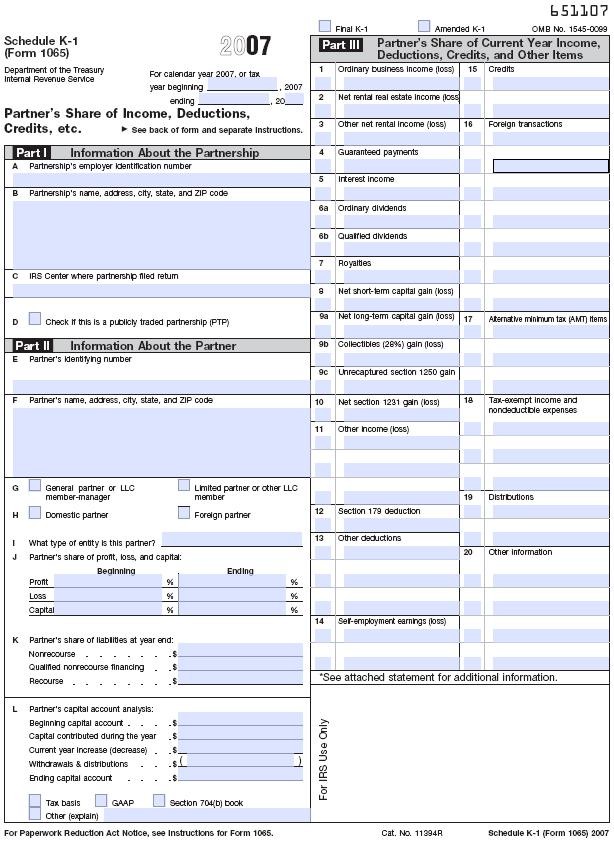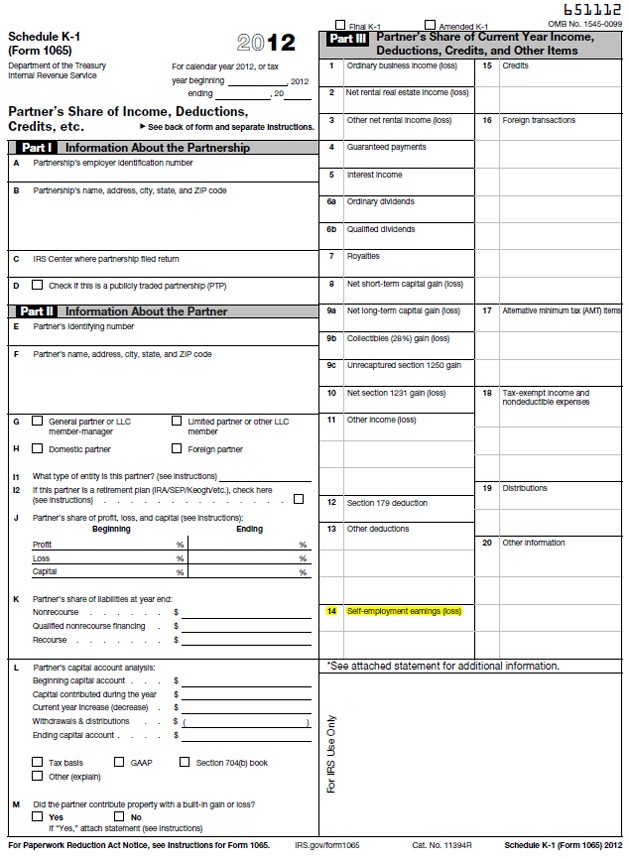What is a Schedule K1 Form
Post on: 17 Июль, 2015 No Comment

If you are an owner of a partnership, LLC, S-corp, or other entity that passes through taxes to its owners, in most cases you will receive a K-1 form each year. The K-1 is prepared by the entity to distribute to owners/shareholders to outline their portion of the income, loss, and deductions. Similar to a 1099 form received that highlights contractor income, you do not have to file the K-1 with your personal income tax return. Instead, you use the data on the form to fill out portions of your personal tax return.
Preparing a K-1 For Shareholders
While a K-1 form is easy if you’re just the recipient needing to record income or losses, the process is a bit more detailed for owners of an S-corp, LLC, or partnership who are responsible for distributing the K-1 forms to members. Not only do you need to report net profit or loss, but some financial data must be tracked individually.
The S-corp or partnership must report certain income and expenses separately from the net profit or loss amount. These income and expense items retain their tax characteristics when passed-through to the shareholder, and are subject to the limits and tax rates on each shareholders personal Form 1040. Separately stated items are the following:
- Section 1231 gains and losses,
- Net short-term capital gains and losses,
- Net long-term capital gains and losses,
- Dividends eligible for the dividends received deduction (if a shareholder is a C-Corporation),
- Charitable contributions,
- Taxes paid to a foreign country,
- Tax-exempt interest and related expenses,
- Investment income and expenses,
- Amounts previously deducted, such as bad debts,
- Real estate income and expenses,
- Section 179 deductions,
- Tax credits, and
- Non-deductible expenses, such as 50% of meals and entertainment expenses.

In addition, you must send out your K-1 forms to shareholders by March 15 th .
The Unexpected K-1
Obviously, if you’re an active member in a partnership or other business that regularly issues K-1s it will come as no surprise when you receive one each year. But there are situations where you may appear to get a K-1 out of the blue, and this can throw you for a loop.
When this happens it’s almost always due to an investment in an ETF or fund that’s operating as a limited partnership. This isn’t always obvious to a regular investor, but buying shares of a commodity fund may in fact make you a part owner of a partnership. That means at the end of the year you’ll receive a K-1 outlining your share of the partnership’s profit or loss. This can come as quite a surprise for a new investor.
One way to tackle this issue is to hold your ETFs or other investments that are limited partnerships inside an IRA. You’ll still get a K-1 at the end of the year, but the taxes are still deferred and it won’t require any additional tax calculations on your end. If you’re holding these in a taxable account, though, it’s a good idea to use good tax preparation software that will guide you through the process. Heres what Forbes has to say about how TurboTax handles K-1 forms .














